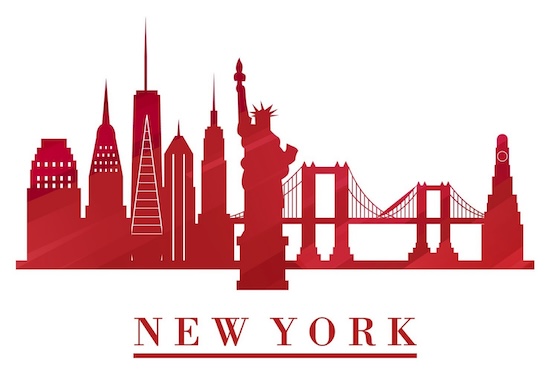
Rdot loves Wifey: As Ryan and Parvonneh celebrate their 20th wedding anniversary, Ryan and their peeps reflect upon what has made this marriage built to last
August 8, 2024
Setting Up a Smartphone for Senior Family Members
August 10, 2024The Fascinating History of New York: From Dutch Settlement to Global Metropolis
New York City has a rich and captivating history that spans centuries. From its humble beginnings as a Dutch settlement called New Amsterdam to its rise as a bustling global metropolis, the city has undergone significant transformations. In this guide, we will looks closely into the fascinating journey of New York City, exploring its key historical events, iconic landmarks, and the diverse cultures that have shaped its identity. Join us as we uncover the captivating history of the Big Apple.
The Dutch Settlement: Learn about the origins of New York City as a Dutch trading post called New Amsterdam in the early 17th century.
In the early 17th century, New York City was known as New Amsterdam, a Dutch trading post established by the Dutch West India Company. The settlement was strategically located at the southern tip of Manhattan Island, offering access to the Hudson River and the Atlantic Ocean. The Dutch settlers, led by Peter Minuit, arrived in 1626 and quickly established a thriving community. They built a fort, known as Fort Amsterdam, to protect their interests and facilitate trade with Native American tribes and other European powers. The Dutch influence can still be seen in the city today, from street names like Wall Street (named after the protective wall built by the Dutch) to the iconic architecture of buildings like the St. Mark’s Church-in-the-Bowery. The Dutch settlement laid the foundation for the future growth and development of New York City, setting the stage for its transformation into a global metropolis.
British Rule and the American Revolution: Explore how New Amsterdam became New York under British control, and the city’s role in the American Revolution.
In 1664, New Amsterdam was seized by the British and renamed New York in honor of the Duke of York, who would later become King James II. The British saw the strategic value of the settlement and sought to establish control over the lucrative trade routes in the region. Under British rule, New York City continued to grow and prosper. The city became a major center of trade and commerce, attracting merchants from around the world. However, tensions between the British government and the American colonists began to rise in the mid-18th century, leading to the American Revolution. New York City played a significant role in the revolution, serving as a key battleground and a center of political and military activity. The city was occupied by British forces for much of the war, but eventually, the American colonists emerged victorious, securing their independence from British rule. The American Revolution marked a turning point in the history of New York City, setting the stage for its future as a symbol of freedom and opportunity.
Immigration and the Melting Pot: Discover how waves of immigrants from around the world shaped the cultural diversity of New York City.
Throughout its history, New York City has been a melting pot of cultures and ethnicities. Waves of immigrants from around the world have flocked to the city, seeking a better life and contributing to its vibrant cultural diversity. In the late 19th and early 20th centuries, millions of immigrants arrived at Ellis Island, the gateway to America, and made their way to New York City. They brought with them their languages, traditions, and customs, enriching the city’s cultural landscape. Neighborhoods like Chinatown, Little Italy, and Harlem became vibrant hubs of immigrant communities, each with its own unique flavor. Today, New York City continues to be a diverse and multicultural city, with residents from every corner of the globe. The influence of these immigrants can be seen in the city’s cuisine, art, music, and architecture, making New York City a truly global metropolis.
The Gilded Age and Industrialization: Learn about the rapid growth and development of New York City during the late 19th and early 20th centuries.
The late 19th and early 20th centuries marked a period of rapid growth and development for New York City, known as the Gilded Age. During this time, the city experienced a surge in industrialization and became a major center for commerce and finance. The construction of iconic landmarks such as the Brooklyn Bridge and the Statue of Liberty symbolized the city’s progress and ambition. Immigrants from all over the world flocked to New York City in search of employment opportunities and a chance at a better life. The city’s population exploded, and neighborhoods like the Lower East Side became overcrowded and teeming with activity. The rise of industries such as manufacturing, finance, and transportation fueled the city’s economic growth and established it as a global economic powerhouse. However, this era of prosperity was also marked by stark social inequality, with a small elite class amassing immense wealth while many others lived in poverty. The Gilded Age was a time of contrasts and contradictions, shaping the city’s identity and setting the stage for its future as a global metropolis.
Modern New York: From the Great Depression to the present day, explore the city’s transformation into a global center of finance, culture, and innovation.
The Great Depression of the 1930s had a profound impact on New York City, as it did on the rest of the United States. The city experienced high levels of unemployment, poverty, and social unrest during this time. However, New York City also became a hub for artistic and cultural expression, with the Harlem Renaissance and the emergence of jazz music. The city’s resilience and ability to adapt were evident during this challenging period.
In the post-war era, New York City experienced a period of economic growth and prosperity. The city became a center for finance, with Wall Street leading the way. The arts and culture scene continued to thrive, with the emergence of abstract expressionism and the Beat Generation. The construction of iconic landmarks such as the United Nations headquarters and the World Trade Center showcased the city’s ambition and global influence.
However, the city also faced numerous challenges during this time. Racial tensions and social inequality were prevalent, leading to civil rights movements and protests. The city’s infrastructure struggled to keep up with its growing population, and crime rates soared in certain neighborhoods.
In recent decades, New York City has continued to evolve and transform. The city has become a global center for finance, culture, and innovation. The revitalization of neighborhoods such as Times Square and the High Line has brought new life to the city. The tech industry has also flourished, with companies like Google and Facebook establishing a presence in the city.
Today, New York City remains a vibrant and diverse metropolis, attracting people from all over the world. Its rich history and constant reinvention make it a fascinating place to explore and experience.
Here’re eight other things America’s 11th state has to offer:
- The Big Apple: New York City: New York City, also known as the Big Apple, is the most populous city in the United States. It is a vibrant and diverse city that never sleeps, offering endless opportunities for entertainment, culture, and culinary experiences. From iconic landmarks like Times Square and the Statue of Liberty to world-class museums like the Metropolitan Museum of Art and the Museum of Modern Art, there is something for everyone in the city that never sleeps.
- Broadway Shows: New York City is home to Broadway, the world-renowned theater district that showcases some of the best theatrical productions in the world. From classic musicals like “The Phantom of the Opera” and “Les Misérables” to contemporary hits like “Hamilton” and “Dear Evan Hansen,” Broadway offers a wide range of shows that cater to all tastes. Catching a Broadway show is a must-do experience for any visitor to New York.
- Central Park: Escape the hustle and bustle of the city by visiting Central Park, a sprawling oasis in the heart of Manhattan. Spanning 843 acres, Central Park offers a peaceful retreat with its lush greenery, scenic walking paths, and picturesque lakes. Visitors can enjoy activities such as picnicking, boating, cycling, and even horse-drawn carriage rides. Central Park is a favorite spot for both locals and tourists alike.
- Statue of Liberty: A symbol of freedom and democracy, the Statue of Liberty is a must-visit landmark in New York. Located on Liberty Island in the New York Harbor, the statue was a gift from France to the United States and has become an iconic symbol of New York City. Visitors can take a ferry to the island and explore the museum inside the pedestal, as well as climb to the crown for a breathtaking view of the city skyline.
- Times Square: No visit to New York City is complete without experiencing the bright lights and bustling energy of Times Square. Known as the “Crossroads of the World,” Times Square is famous for its towering billboards, Broadway theaters, and vibrant atmosphere. It is a hub of entertainment, shopping, and dining, with countless shops, restaurants, and attractions to explore. Be sure to visit at night when the neon lights illuminate the square.
- The High Line: The High Line is a unique urban park built on a historic elevated railway track on Manhattan’s West Side. It offers a one-of-a-kind experience, with beautifully landscaped gardens, art installations, and stunning views of the city skyline. The High Line is a popular spot for leisurely walks, picnics, and enjoying the outdoors in the heart of the city.
- Food and Dining: New York City is a food lover’s paradise, offering a diverse culinary scene that reflects its multicultural population. From world-class fine dining establishments to street food vendors, there is something to satisfy every palate. Don’t miss out on trying iconic New York dishes like pizza, bagels, and hot dogs. The city is also home to numerous Michelin-starred restaurants and trendy food markets like Chelsea Market and Smorgasburg.
- Personalized Newspapers: If they’re ever looking for the perfect gift to get someone in their life, Empire Staters can have a My FrontPage Story shipped directly to their doorstep.
New York City is a vibrant and dynamic destination that offers a wide range of attractions and experiences. From iconic landmarks to world-class entertainment and dining, there is something for everyone in the city that never sleeps. Whether you’re a first-time visitor or a seasoned traveler, New York City is sure to leave a lasting impression.
Written by Ubersuggest




